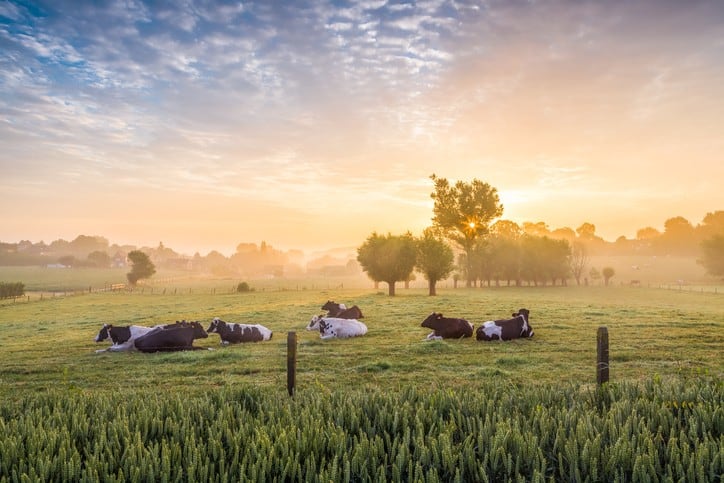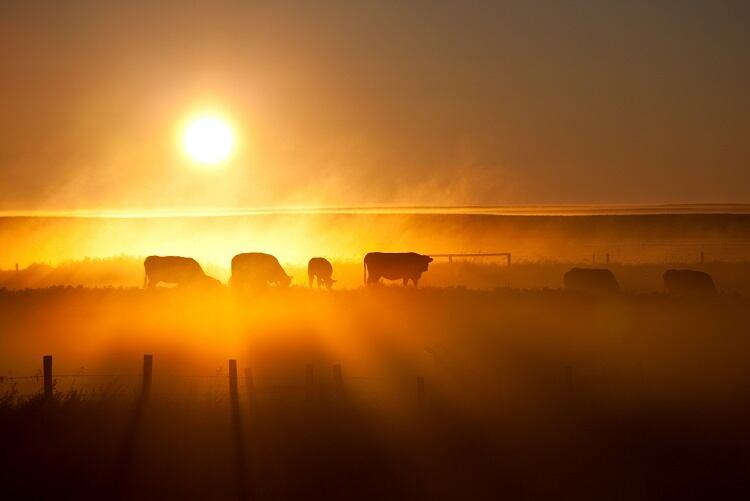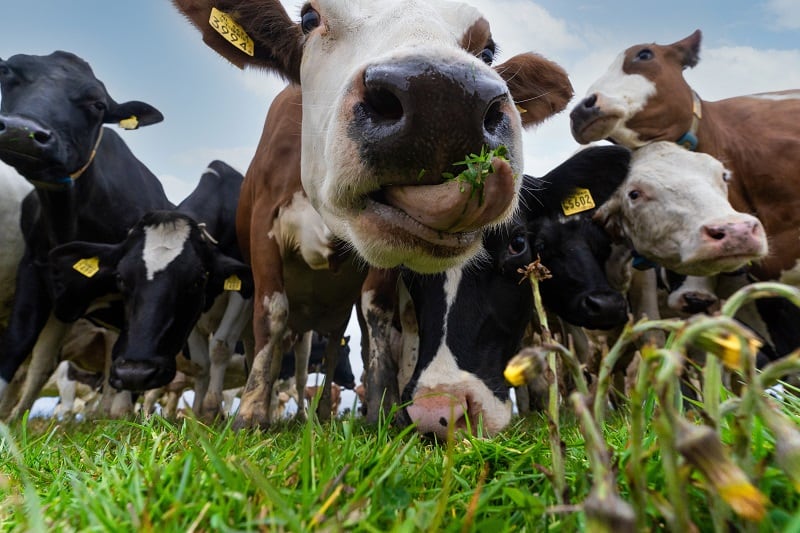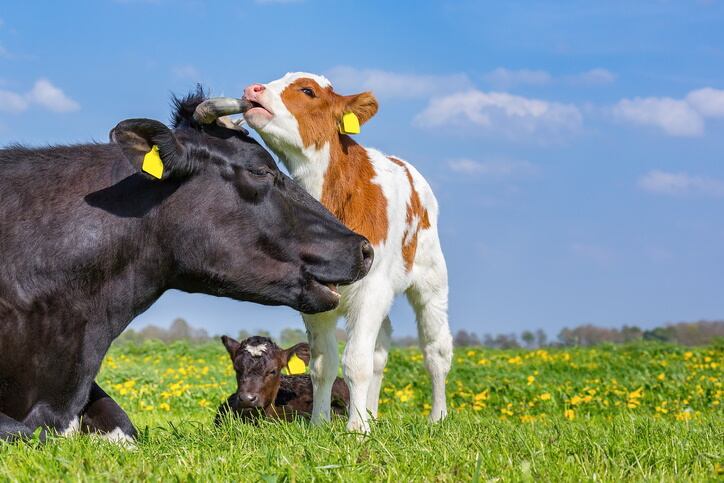Dairy producers are faced with a unique set of challenges and opportunities as the industry navigates the social, environmental and economic issues facing dairy businesses in the wake of the COVID-19 pandemic and climate challenges. These took center stage at the Dairy Sustainability Alliance spring meeting, which was held between 18th and 19th of May in person and digitally.
The event, which is staged by the multi-stakeholder initiative of the checkoff-founded Innovation Center for US Dairy, attracted more than 270 representatives of the dairy value chain organizations, including 25 dairy farmers. The aim was to facilitate an exchange of ideas, best practices and tackle shared challenges on issues and opportunities affecting the industry to accelerate progress toward common sustainability goals.
“Never has the opportunity been greater for us to come together and demonstrate our collective impact,” Barbara O’Brien, Dairy Management Inc. (DMI) and Innovation Center CEO, told the audience.
Opening the event, she shared her view on key marketplace forces and trends that have been identified as important opportunities for US dairy.
“Never has it been more urgent as we work to meet the growing demands and expectations of both customers and consumers around personal wellness, environmental sustainability and food security,” she suggested.
O’Brien said that the dairy sector needs to respond to – and take advantage of – these evolving expectations to unlock its full potential.
Gen Z and future-fit dairy in a digital world
O’Brien said the dairy industry needed to maintain its relevance, noting that at 72m strong and with a purchasing power of $100bn Generation Z is the ‘most diverse generation to date’. To meet the needs of this consumer cohort, dairy makers and bands must reflect and meet their expectations around diversity and inclusivity.
Gen Z and Millennial consumers are making grocery store purchases based on their health and wellness views and these consumers are looking for foods that deliver energy, a sense of calm, immunity and gut support, fight inflammation and help their children on a pathway to lifelong wellness, the event heard.
The dairy expert believes technology is playing an important role in ‘redefining’ how people manage health and wellness. COVID-19 accelerated the ‘do it yourself’ healthcare movement in the US, O’Brien said, citing statistics suggesting more than 60% of Americans use ‘food as medicine’ to prevent health conditions.
These consumers want to support brands that they see as treating the animals, the planet and workers with respect. Consumers have elevated expectations that dairy – and other businesses – must lead in providing solutions to societal challenges. O’Brien called this the ‘notion of purpose over profit’, something she said had been bolstered by the pandemic, growing concern over climate change and other social and market forces.

People are now demanding greater transparency and accountability. She pointed to the Innovation Center’s 2050 Environmental Stewardship Goals as a proactive step the industry has taken. This is a voluntarily commitment to advance sustainability leadership and transparently report progress. To date, 35 dairy companies, representing more than 75% of US milk production, have signed-up.
O'Brien also pointed to the rapid evolution of digital technologies and marketplaces . With one in five grocery dollars expected to be spent in digital through to 2025, she stressed dairy needs to have new digital frontiers firmly on the agenda.
Beau Hayden, vice president of insights/sales and trust for DMI, explained the evolution of consumers’ shopping habits and how the pandemic impacted online sales. “The path of purchase is not as linear as it once was,” Hayden said. “It used to be, ‘Hey, I saw something on TV or I saw it in a Sears catalogue.’ You fast forward to today where your journey might start on YouTube or Hulu. Then you’ll somehow get an ad on Instagram or Facebook for something that you may have been talking to your spouse or kids about.”
Hayden said the checkoff’s Reset Yourself with Dairy campaign launched last fall seeks to immerse dairy more deeply in the social media world. He said pre-pandemic online sales of grocery items totaled 2%, but they jumped to 20% during peak COVID-19 periods. Sales since have settled to about 13% but dairy has built a strong online retail presence.
“E-commerce retailers love the dairy category,” Hayden said. “There are plus-75% more dollars spent when dairy is in the basket. Dairy is second largest department behind dry goods.”
Sustainability key despite challenges and costs
Looking to the future of US dairy, industry experts insisted sustainability efforts continue to hold promise and opportunity, even amid the uncertainty of inflation, global conflicts, continued workforce and supply chain disruptions, and an increased focus on ESG reporting.
“Sustainability has become mainstream. It’s part of a normal conversation,” said Brad Anderson, president and CEO of California Dairies. “Maybe five, eight years ago, you had sustainability experts talking to sustainability experts, but I rarely talk with a customer where the conversation doesn’t start with ‘what are you doing around some form of sustainability?’
“There is a big opportunity for the dairy industry to lead, be in front of consumers and build the demand they’re expecting. Absent of that, someone else will fill that void. Whether you’re on a farm or in a processing facility or a co-op or any other capacity in the marketplace, your role is really important because the consumers are demanding it and that demand will be greater tomorrow than it is today.”
Pennsylvania dairy farmer Marilyn Hershey, who serves as chair of DMI, shared stressed economic returns must be part of the conversation.
“It’s very important for us to be stable economically and how does sustainability fit into that?” she said. “You have that two-way street where there is concern about sustainability and the cost of it, but then you realize the customers are asking for it, so it’s a necessary step for us.”
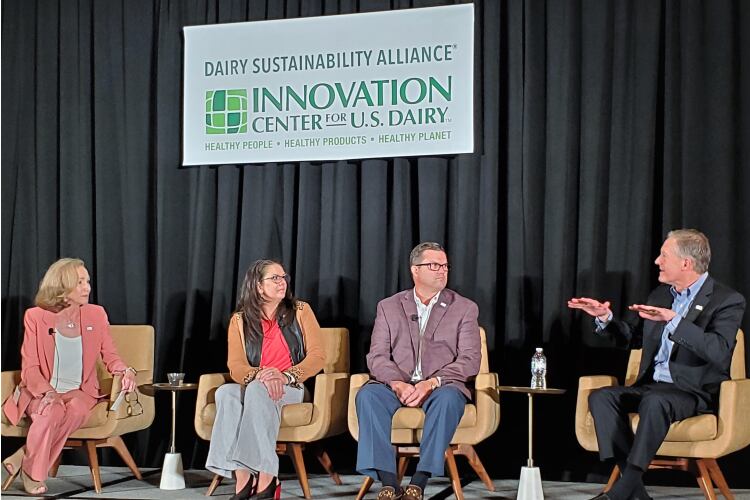
Taking global climate leadership
The Global Methane Pledge presents the US dairy sector with an opportunity to help lead the transition climate smart dairy, speakers at the event suggested.
The pledge was launched at COP26 and aims to reduce global methane emissions by 30% by 2030. It affords US dairy the opportunity for research and leadership, including collaboration to advance mitigation of enteric emissions.
Nick Gardner, senior vice president of sustainability and multilateral affairs for the checkoff-founded US Dairy Export Council, stressed methane mitigation has long been a priority. The conversation has been accelerated because methane’s intrinsic characteristics as a potent greenhouse gas with a short lifespan means short-term methane reductions can meaningfully reduce warming.
“COP26 represented a culmination of many years of rising attention and activism within the global community on agriculture and food systems,” Gardner said. “We should keep in mind that COP26 occurred just months after the culmination the UN Food Systems Summit, which helped to galvanize growing attention, momentum and urgency at the highest levels of government that more action is needed to reduce the environmental impact of food production.”
Gardner pointed to the Agricultural Innovation Mission for Climate (AIM for Climate) effort, which was launched by the United States and United Arab Emirates at COP26 to address climate change and global hunger by increasing investment in climate-smart agriculture and food systems innovation.
The Greener Cattle Initiative (GCI), which was created by the Foundation for Food & Agriculture Research and the Innovation Center for US Dairy, was flagged as another critical piece of the methane solution. It is a five-year public-private partnership that aims to reduce enteric methane emissions from dairy and beef cattle.
Dr. Juan Tricarico, vice president of environmental research for DMI and the Innovation Center, said GCI is in the process of accepting requests for proposals to award $5 million in research grants to identify, develop and/or validate scientifically sound, commercially feasible and socially responsible methane mitigation options.
“There are two important elements here,” Tricarico said. “Of course, the funding is important, but the network and the sharing of knowledge is also critically important, so the right work gets done.”

